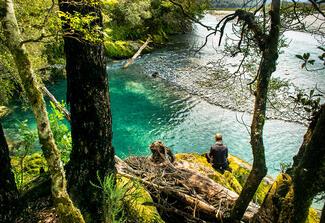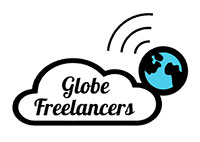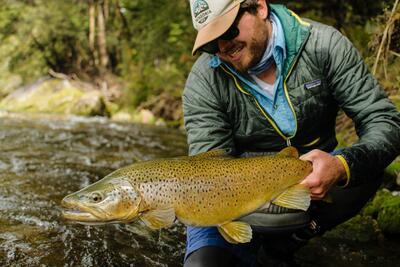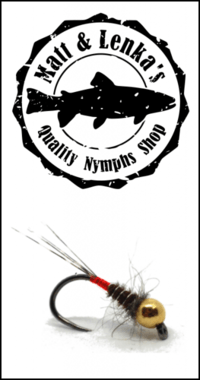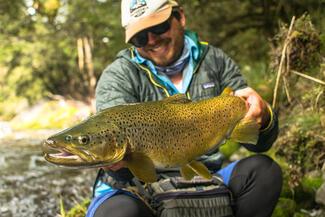
We have been road tripping around New Zealand for the last 9 months. Many would consider that we are living the dream. This country is often described as the trout bum heaven. It is advertised as an Eldorado where trophy size trout (who weighs more than 10 lbs) are often captured and fishing quality is nowhere as good on Earth. About trout fishing, what you’ve heard about the Long White Cloud country is true. Even if they are easy to spot, not always but most of the time, a 7 or 8 lbs fish in a gin-clear water pool can’t be missed, they are not that easy to catch. Some fish can be a real challenge to hook and bring to the net with a fly rod. Days ending with more than 20 km walked to present your fly to only 3 fish are more frequent than advertising articles would you to know. Such a destination also comes with downsides.
The misinformation spread on social media made by guides, fishing lodges and anglers themselves in the quest of few more likes bring a lot of overseas anglers. The aim of this article is to share how I feel about this fishing destination after a 9-month stay. I am part of the few fly fishermen that are not in ecstasy about it any more.
I rather tell you right now, this article is harsh. Here, they won’t be any false publicity about Hardy rods that neither you nor I could afford. It is not a story to tell you how good my fishing trip was to sell dreams. You get hammered with this kind of story all day long on social media, whether it’s about fishing or pure tourism. In the other hand, I will tell you all I know about New Zealand, and why I don’t dream about it anymore since I dropped my backpack and landed here. Are you ready? Are you sure? Because if you love nature, this paper might not leave you untouched.
While I have a very sensitive opinion regarding environment, its protection and the actions intended against it, I would like to mention a few things before getting into the main topic. In order to avoid sterile debate and peremptory judgement, I need to clarify some points. I am well aware that I took a plane to reach this side of the world. It was 3 years ago, but still, is not without consequences on the planet. It’s a fact that I remember almost every day and that I don’t forget. That said, I sincerely believe that my carbon footprint is still lower than most Aussies and Kiwis I encountered. Leaving in a self-contained campervan with a solar panel allows us to be almost self-sufficient. We still have to take hot showers at the swimming pool during winter, though. We also make everything we can to reduce our wastes and plastic usage (which is a challenge this side of the world). We only buy local food, nothing that crossed half of the world on a big cargo and try as hard as we can to lower our impact. That said, let’s get into it.
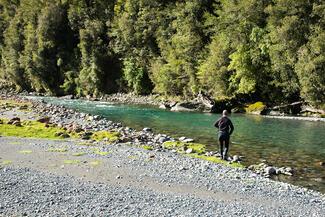
New Zealand : the hidden side
I have been dreaming about it for years. Hunting trophy size trout in crystal clear rivers. Articles in magazines, movies, videos, photos on social media, everything was telling how great this country is for the nature lover that I am.
And today, I am angry against all the people that sold it as a down-to-Earth country because they lied. I was told New Zealand is close to its biodiversity and makes everything possible to protect it. As an environmentalist, wilderness enthusiast, I was dreaming about this country as the only one I could probably live on. But all that misinformation made me very disappointed. It is probably that I should have dug more before coming. I supposed I wanted to keep a part of mystery, but I never read any article in any magazine that told how bad the environmental situation is in New Zealand. I obviously heard about didymo and dairy farming here and there, and mostly from the Kent and some articles in FlyLife Magazine. But from the French anglers that are yearly or every few years flying to New Zealand, fish and get published in our local fishing magazines or blogs, I never heard anything about the environment in New Zealand. Not a single French fishing journalist never ever mentioned anything about the agricultural, ecological and mass tourism disasters in New Zealand.
I really wonder what is worse in the end: that people travelling here don’t even pay attention or realise what’s going on, or the fact that they know but prefer to sell dreams with their big 8 pounder caught on a size 16 nymph and 4x tippet.
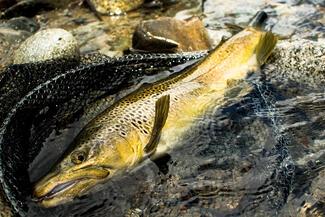
Helicopters and glacier’s melt
This could have been the title of a tale. I had the idea to write it but to be honest, the situation is not really appropriate to humour.
I am angry against myself now. How could I be so naive? How could I think that a country could be so perfect? Of course, I knew that fly-fishing guides were using helicopters. But I didn’t that almost all of them were using their services at the drop of a hat.
Their entire business plan is based on helicopter guiding to wealthy American clients not able to walk anymore that want to fish where others can. I didn’t think that with glacier losing terrain every day, at this speed, people could still burn fossil fuel straight above them remorseless. I thought fishing guides were keen to protect nature and defend the magic environment in their backyard they treasure deeply. It seems they rather get their business working properly and keep pulling on the rope. And when money is involved, it’s hard to say no, or stop, they are just human after all.
And if they were only the fishing guides, it wouldn’t be a problem and glacier would still be as strong as 150 years ago. I don’t only throw the rock to fishing guides. Every year, thousands of tourists fly above Franz Josef and Fox Glacier. When we hiked to the Alex Knob Summit, we stopped counting at 40 helicopters by midday. Tourists and locals don’t seem very concerned about the very disturbing melt they are subject to those last 20 years. Having its own selfie with crampons and ice axe on the top of a glacier in front of the helicopter is far more important.
To realise how bad the tourism industry is in New Zealand, you just have to walk in a Visitor Centre. It is supposed to be the perfect place to gather information about local activities. Well, in New Zealand, Visitor Centres only provide you very limited information about walking tracks and hikes. If you are not into heli-hike, scenic flights, jet boats, luxury accommodations, or any activity that stabs the planet in the back a wee bit more, there is nothing they can do for you. Well, you can book for a Great Walk, where you’d have to pay $70 per person per night to sleep in a hut.
To those who’ve never been in New Zealand, a hut, is a form of accommodation in the backcountry. Usually, on the Great Walks, they are serviced, which means, cleaned up and looked after by a ranger. There is a place to cook with your own gas burner, a fireplace and tables to sit. Beds are in dorm rooms (usually up to 16 people per room) and you have access to toilets and cold water. Yes, $70 per person per night, to sleep in a dorm room without showers nor gas. If Anne and I would go for a 3 nights hikes on one of the Great Walks, we could have afforded a scenic flight above glaciers instead. Isn’t that crazy?
Whether it is government, actors in the local tourism or the tourist themselves, it seems that absolutely nobody cares about the climate emergency we are facing here. When the hiking trails price are so high, to limit the number of users, that many tourists prefer to spend the same money in a scenic helicopter flight, there is definitely something wrong. The scientific community is screaming every single day about the situation. The biodiversity is dropping, and threatened species list is growing weekly. In the other hand, the quantity of plastic in the ocean is massively increasing and the impact on marine fauna is devastating. This immobilism is absolutely choking, even more here than anywhere else. Probably because this country has been sold to me as “green”, down-to-Earth and close to its nature. But it seems that the popularity of hunting and fishing doesn’t grow any desire to protect the environment and those fragile ecosystems. Only trophy size trout in the camera or deer antlers above the chimney matters. This also concerns you, international visitors.
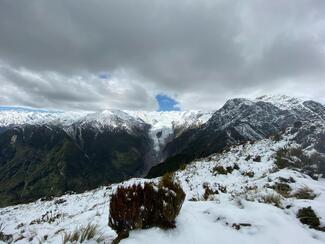
Intensive agriculture and aquatic ecosystems destruction
Here, as much as in France, aquatic ecosystems are highly threatened. I don’t only talk about trout, they have been introduced after all. But the impact of intensive agriculture in New Zealand also affects marine biodiversity. This magazine talks about trout fishing, but keep in mind that anything that touches trout also affects fur seals, dolphins, orcas, wales, kahawai and yellowtail kingfish. And the situation is only getting worse on this side as well.
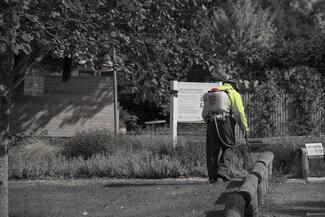
New Zealand farmers don’t seem very preoccupied by the consequences of their actions on the environment neither. For most of them, it is completely normal to throw the effluents straight into the wetlands or rivers. We have seen some spraying glyphosate on anything looking like a weed or again burning piles of plastics in the backyard and other wastes weekly. It’s not just things we heard or read somewhere, we worked in 4 different farms and visited a few more. The situation was similar in all of them. There are also famous cases of pollution known by the government that have been staying unpunished. New Zealand’s agricultural landscape is constituted of wide plains where all the native trees have been cut a longtime ago. Those large green hills that so many people claim to be the most beautiful landscapes in the World are just the theatre of a crime against the planet.
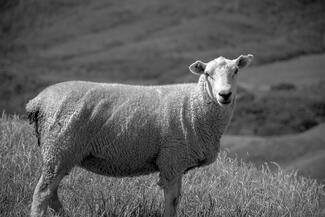
But that’s not it. In New Zealand, the agricultural disaster is also 5 million dairy cows, another 5 million beef cattle and 27.4 million sheep. If this last number seems very high, keep in mind that it was 40 in 2000. Fonterra, the dairy lobby is considered as one of the most powerful lobbies in the world and guess what, it’s a kiwi company. As a reminder, NZ is inhabited by 4 million people. And it doesn’t stop here. The tree farming is the third source of incomes for the country behind meat and dairy. Before the arrival of the settlers, Aotearoa was covered at 80% by forest. Only 24 % are left. Tree farming consists in cutting all the native forest and plant European pines instead. They are invasive and threat native species. When those pines are big enough, they are cut in logs. Logs are put on trucks and drove to the port where they are stacked on boats. Those boats sail to China, where the logs are transformed into furniture. The furniture is then sent back to New Zealand where kiwis can expose them in their living room and tell you they have “NZ wood furniture”.
Welcome in the real-world Benjamin. At least travel taught me all that. All those practices are driven by capitalism and European countries are doing the exact same things. I don’t blame kiwis to do what has been done for centuries around the world. But the thing is, nobody in Europe would tell you about all that after a fishing trip in New Zealand. Neither on the side of my fellows’ travellers. For most tourists, New Zealand is a magnificent country, wild and green, inhabited by down-to-earth people. And I believed it.
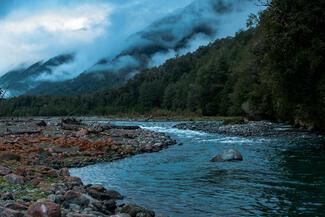
Cancelling a backcountry fishing trip
At the beginning of the season, I had a perfect weather forecast window. 5 sunny days to explore the Fiordland National Park. It is a wilderness area, probably the most protected and untouched place in New Zealand. With its rough accessibility and unpredictable weather, not so many fishermen venture out in the backcountry of the Fiordland National Park. For that, trophy size brown and rainbow trout reward those who don’t mind solitude, tough conditions and sandflies. Everything I love.
It was early November 2019 and fishing season was only open since the beginning of October. A month that received a lot of rain. It has been quite hard to fine fishable water and the backcountry opportunities were rare. This time, conditions were perfect, and I was looking forward to bringing Anne into this new National Park. This area receives 6000 mm of rain per year. It’s 10 times more than Paris, and 20 times more than Toulouse my hometown. So 5 days with clear sky and no rain was an opportunity I didn’t want to miss. Even though, in New Zealand, the weather should be really not taken care of for more than 3 days. It changes very quick and it’s unpredictable.
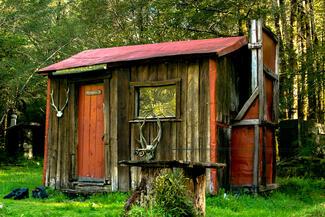
Anyway, on the way, I did a last check for the huts on the website of the Department of Conservation. Here, I learned that on from the 2nd to the 3rd of November, the access to Fiordland National Park (including the area I was targeting) would be closed. The reason was operations of heli-spraying of 1080. 1080 is a poison used to kill pest species. It is sprayed from a helicopter on the bush. But it is a volatile substance and there is no doubt it reaches us, humans, and all the other species around.
Because of this kind of operation, parts of National Parks are closed from time to time. But I never heard of it before coming here. None of the famous French fly fishing journalist ever talked about it anywhere. Which is a nonsense those days, with the numeric era, thousands of photos are published every year but nobody would talk about 1080.
I will spare you the paragraph about mining in New Zealand, especially coal mining industry which is one of the worse against environment. For some kiwis I met, it’s a “greeny” thing to complain about coal mining. After all, it creates jobs. I doubt those jobs will be much important 50 years in the future when climate change will hit us in the face. Enough bad talks for today.
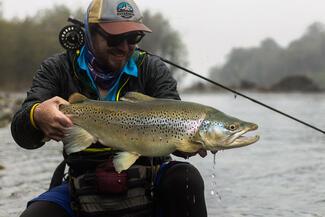
Fly-fishing in New Zealand
I complain a lot about New Zealand situation. This anger is mostly against myself because I am/was naive. On the fishing side, the quality is just like everybody was describing. I have been living fantastic moments on the rivers and I caught some very big trout. Fish so big that I will probably never catch anything this size in my life. This year is particular, though, it’s a mouse year. Every 10 years or so, native beech trees have their cycles and they product a lot of seeds. Those years, mice population increase a lot. You can see heaps of them just when you walk in the forest. The huts got invaded in some parts of the country. Those mice cross the rivers during the night. And big trout love to feed on them. They become so big that it can sometimes be ugly. A fish that would normally weight 6 or 7 pounds can reach the double figure on a mouse year. But those fish activity is slightly different. They feed a lot overnight and their stomach is usually full of mice during the day. So they spend a lot more time resting, deep on the bottom of the pools. Mice feeder fish are quite challenging to tempt. I figured that waiting for a flood a fish the 12 hours when the water level starts to drop is the best to have a chance.
I spent some time with a young French fisherman named Guido. A good fella with whom it was a pleasure to fish. He definitely knows what he is doing with his fly rod. Guido was a really good mate and he definitely contributed to my good time on the water, which is why I’d like to thank him again here.
We realised a 4-day trip together, out in the backcountry. Backpacks fully loaded, we walked 80 kilometres that trip. We had a 4 seasons like weather typical of New Zealand. It made the adventure just more interesting and challenging. Even though we only caught 4 fish each, we had 2 fish of 9.5 lb and 2 of 11.5 lb which is rather amazing. Efforts were rewarded much more than expected. It is the kind of trips I love, not only because we caught big trout, but because we had doubts, up and downs and so much emotion. It is something that gives still a little bit of interest to New Zealand, in my opinion.
But even with the backcountry, I have been a little bit disappointed. I probably rose my expectations too high. Or I really lived something special in Tasmania where it was possible to walk in the bush for an entire week without seeing anyone. The Western Lakes area on the Central Plateau gave me a real taste for true wilderness and backcountry that I was expecting to find here in New Zealand. I was looking for escape, true escape, silence and serenity. Well, it was not to mention the noise of helicopters, walkers, fishermen, hunters with whom you have to share track, huts and sometime the rivers. It can really seem selfish, but yes, I was expecting to be alone out there. I really enjoy solitude, peace and quiet and I have been struggling to find it. I was expecting to find places where I could be far from any human soul in New Zealand. But even when you walk for 2 or 3 days, I always bumped into somebody.
As I said, I probably rose my expectations too high. I’m not the only one trout buming New Zealand or going around the country looking for introspection. I also probably stopped too early. But today, I don’t have the motivation anymore. I lost all the taste of this hunt of big trout. I even decided to shorten my stay in New Zealand. Which should make all the kiwis hating overseas travellers happy. To all those I heard complaining about us, I would just like to remind you how important we are for your jobs and economy in NZ.
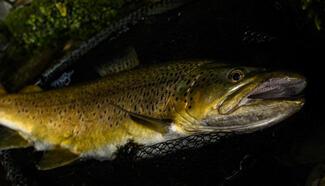
Fishing in New Zealand : conclusion
To conclude this article, on the fishing matter only, I must admit New Zealand is special. Those big trout swimming in crystal clear pools is real. Their difficulty to catch and eyes in the back are also true. But without the challenge, there is no point coming here. Watch a very big trout slowly going up to casually sip a dry fly is a magic moment. And I will never remove that to the Long White Cloud country. But the sadness to notice by myself that, with our lifestyle, we are ruining this resource and vow it to disappear is here.
If you want to bend your carbon blank in a landscape that doesn’t look like Europe and is quite beautiful, New Zealand will be your paradise. But if you’re a little bit picky like me, enjoy nature, wilderness and ecology probably more than the fishing itself, you might be a little bit disappointed. If for you human impact is a disaster, I will very honestly tell you : this country can be scary.
I had been told that NZ would hit me in the face. I’m afraid it did but definitely not the way I expected. I decided to keep going and leave. Leaving NZ without a plane on such a short notice with only 2 months left on our visa would be a miracle. So we decided that we will fly to Vietnam and explore South-East Asia slowly. We want to make our way and head home exploring as many countries as we can. The most important thing is that the plane we will take to leave New Zealand will be the last. We want to get as close as we can to the locals we meet. Sensitize other travellers to responsible travel is another of our goals. Being a freelance writer, I am able to work remotely. Anne is an architect so she can work from a laptop as well and subcontract for firms or designers. After 3 years in Oceania, we feel we’ve been around most of it and need to see something different. Discover new cultures and ways of living is important for us. It means I won’t have much chance to catch trout for a while. But the American continent is planned after that (obviously with a sailing trip in between) and it will give me plenty more occasions to write for Trout&co.
